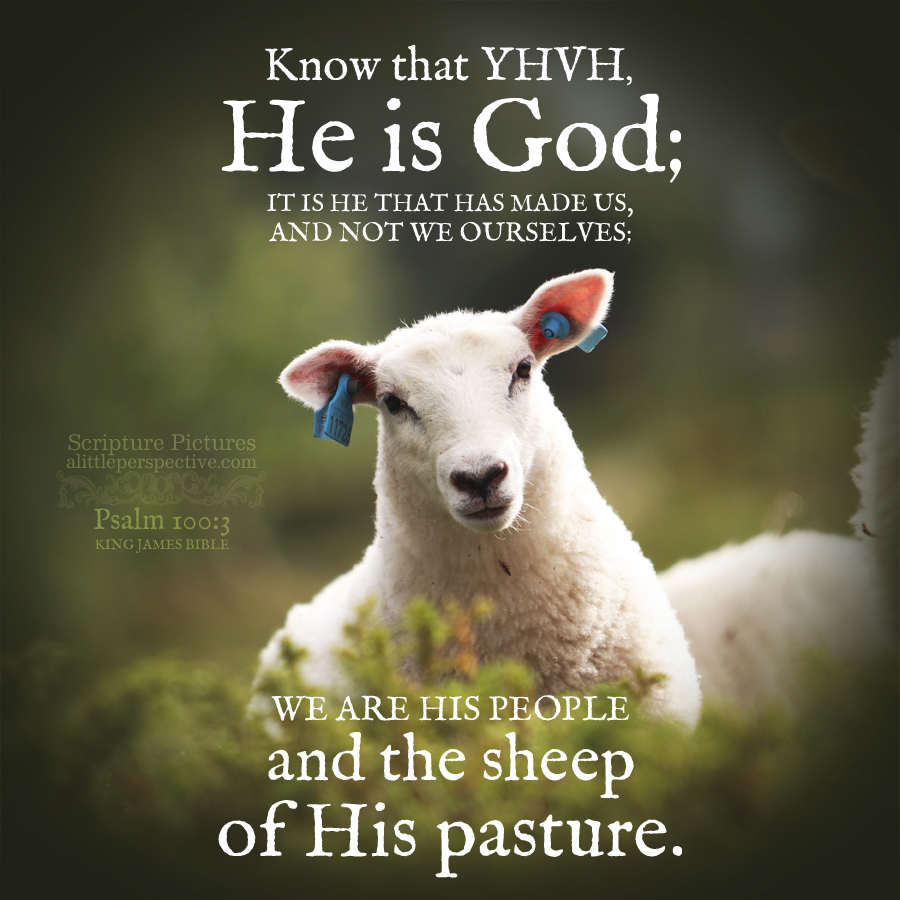Read Psalm 100 at Bible Gateway.
1a) Psa 100:1, Make a joyful shout to the LORD all the earth;
1b) Psa 100:2a, Serve the LORD with gladness;
1c) Psa 100:2b, Come before His presence with singing;
1d) Psa 100:3a, “Know that the LORD, He is God;” {n}
2d) Psa 100:3b, “It is He who has made us, and not we ourselves; We are His people and the sheep of His pasture;
2c) Psa 100:4a, Enter into His gates with thanksgiving, And into His courts with praise;
2b) Psa 100:4b, Be thankful to Him and bless His name;
2a) Psa 100:5, For the Lord is good; His mercy is everlasting, And His truth endures to all generations. {p}
What does it mean to know that the LORD is God? The Hebrew is Strong’s H3045, the primary root יָדַע, yadah, meaning, to know or teach. The ancient pictographs are the yud, the arm and closed hand, thus it means to work, to throw, or to worship. The dalet is the door, thus to enter, to hang, to go through. The ayin is the eye, thus to see, to watch, or to know, i.e., we say, “I see!” when we understand something. So the pictographs seem to be telling the story that it is by doing (yud) we enter into (dalet) knowing or understanding (ayin).
What this really means, as that only those who worship YHVH know that He is God. Others may give mental assent to the fact, but the truth the Scripture teaches is that mental assent is not enough. Mental assent without corresponding action is no knowledge at all.

















Leave a Reply